Massage Benefits Those Living With Cancer
Is Massage Therapy Safe for People Living with Cancer?
Yes, when practiced by a skilled therapist with background or training in massage and cancer. If this was not covered in their basic training in detail, they should have advanced training in the work.
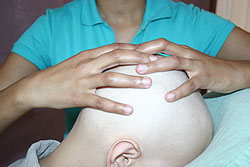 Massage should be modified to work around side-effects or complications of radiation, chemotherapy, surgery, and medications. Blood counts should be considered in massage design, as well. Even after years of survivorship, there are a few simple but critical adjustments in massage therapy, for example, if lymph nodes were removed or treated with radiation, or if bone metastases are present.
Massage should be modified to work around side-effects or complications of radiation, chemotherapy, surgery, and medications. Blood counts should be considered in massage design, as well. Even after years of survivorship, there are a few simple but critical adjustments in massage therapy, for example, if lymph nodes were removed or treated with radiation, or if bone metastases are present.
Therapists with experience or training are aware of these and other adaptations for cancer treatment. Be sure to see a massage therapist who asks about treatments during the interview and who explains any needed massage modifications.
A skilled therapist will combine a thorough intake process with sound clinical judgement and clear communication about what to expect in the session. She or he will adapt the massage to your needs and requests, fashioning a hands-on session that relaxes, energizes and reduces pain and discomfort.
Can Massage Spread Cancer?
No, it cannot. Massage of a solid tumor site should be avoided, but there is more to a person than a tumor site.
An old myth warned that massage could, by raising general circulation, promote metastasis since tumor cells travel through blood and lymph channels. We now recognize that movement and exercise raise circulation much more than a brief massage can, and that routine increases in circulation occur many times daily in response to metabolic demands of our tissues. In fact, physical activity usually is encouraged in people with cancer; there is no reason to discourage massage or some form of skilled touch. Massage is practiced widely at the Dana-Farber Cancer Institute, Memorial Sloan-Kettering, and growing numbers of hospitals around the country. Metastasis is not a concern; instead, patients and researchers report countless benefits.
(click to read an excellent article about massage and cancer spread).
How can Massage Benefit People who are Living with Cancer?
Massage has many benefits for people living with cancer. A few are listed, below. 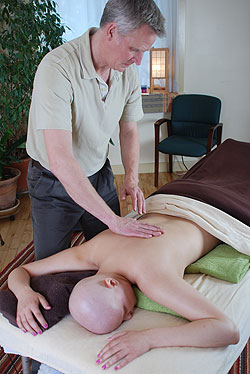 We know some of these from clinical observations, some from controlled research, and some from what clients tell us directly.
We know some of these from clinical observations, some from controlled research, and some from what clients tell us directly.
Massage Reduces Anxiety
Many clients report being less anxious in general when receiving regular massage. In particular, clients in cancer treatment state that massage eases anxiety before and during uncomfortable procedures and interventions. Research literature reports that massage helps anxiety in patients with cancer and in other populations. In repeated studies of various populations, massage helps reduce depression, as well.(1)
Massage Eases Pain
Recipients of massage therapy express less cancer-related pain, treatment-related pain, and pain related to muscle tension. They claim that massage helps “take the edge off” of acute pain and in some cases relieve it entirely. Although the direction of evidence suggests massage is effective for pain relief,(2), (7) more study is needed to firmly establish the role of massage in pain relief for people with cancer.(3)
Massage Helps Control Nausea
Gentle massage has been shown to reduce nausea in inpatients receiving autologous bone marrow transplant. (4)
In a pilot nursing study, stimulation of acupressure points has been suggested to reduce nausea in patients in chemotherapy.(5)
A small study suggested that massage helped decrease medical costs of managing nausea and vomiting.(6)
Massage may be a viable, low-cost approach to minimizing this difficult side-effect of medication.
Massage Improves Sleep and Eases Fatigue
Again and again, clients tell their massage therapists that massage improves their energy level and helps them sleep better, and clients in cancer treatment are no exception. But sleep can be especially hard to come by during cancer treatment, and cancer fatigue is common and poorly understood—a difficult symptom to treat. People in treatment, often with a high degree of symptom distress, are especially in need of good sleep. At least one study shows massage facilitates sleep.


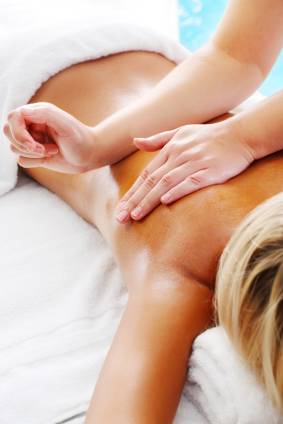
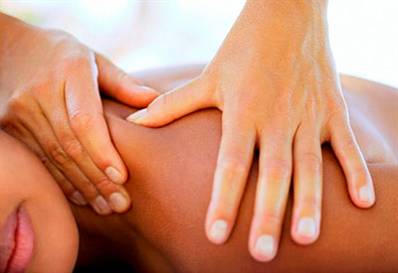
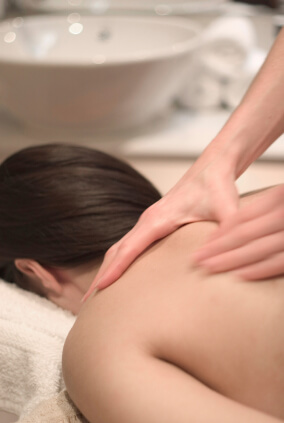
 Massage should be modified to work around side-effects or complications of radiation, chemotherapy, surgery, and medications. Blood counts should be considered in massage design, as well. Even after years of survivorship, there are a few simple but critical adjustments in massage therapy, for example, if lymph nodes were removed or treated with radiation, or if bone metastases are present.
Massage should be modified to work around side-effects or complications of radiation, chemotherapy, surgery, and medications. Blood counts should be considered in massage design, as well. Even after years of survivorship, there are a few simple but critical adjustments in massage therapy, for example, if lymph nodes were removed or treated with radiation, or if bone metastases are present. We know some of these from clinical observations, some from controlled research, and some from what clients tell us directly.
We know some of these from clinical observations, some from controlled research, and some from what clients tell us directly.